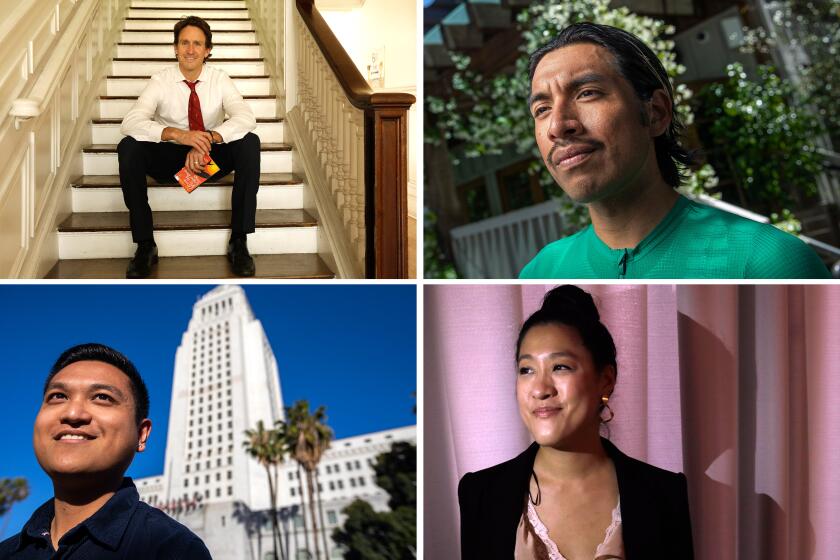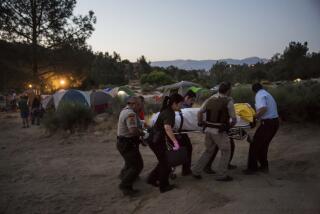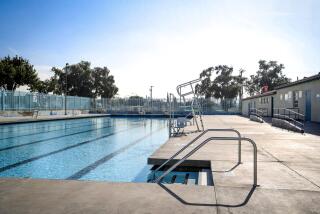Labor pool shortage hits public pools. Here’s why California needs lifeguards
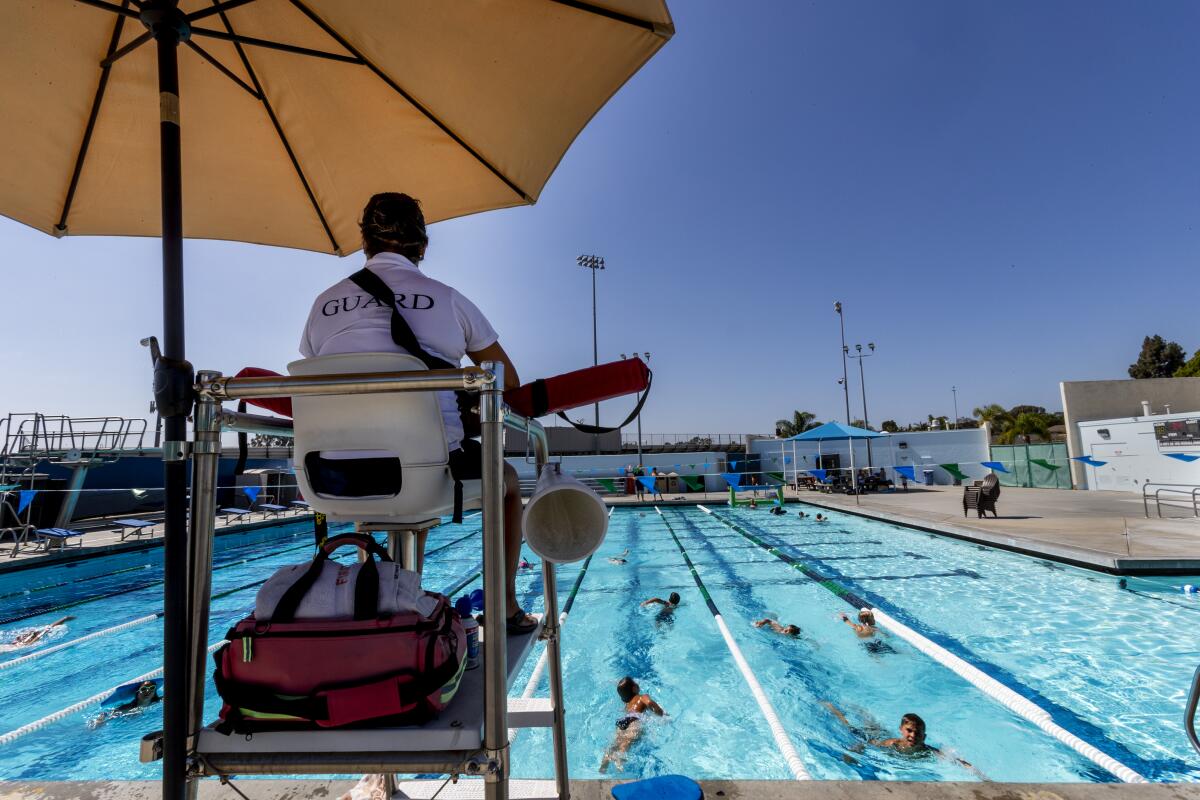
When the heat hits in California, public swimming pools become vital refuges for tens of thousands of families, many of modest means. But because of bureaucratic red tape and the aftermath of pandemic shutdowns, many pools statewide are confronting a labor pool problem — not enough lifeguards.
Oceanside is one of these. The coastal Southern California city recently earmarked $600,000 to upgrade one of its oldest and most beloved public pools, the Brooks Street Swim Center, which serves a low-income neighborhood. The pool’s future triggered an intense dispute last year when some City Council members wanted to shift its funding to a new aquatics center in a more affluent part of town, an idea that was shelved after community members called it racist and “disrespectful.”
But because of the lifeguard shortfall, Brooks Street Pool is one of many in California that have been forced to cut back hours.
“That [funding] was a massive thing for the community,” said Assemblywoman Tasha Boerner Horvath (D-Carlsbad), author of a bill that aims to address the state’s lifeguard shortage. “We get money in the budget last year to keep the pool open, and why is it that the pool can’t open? Because there are no lifeguards.”
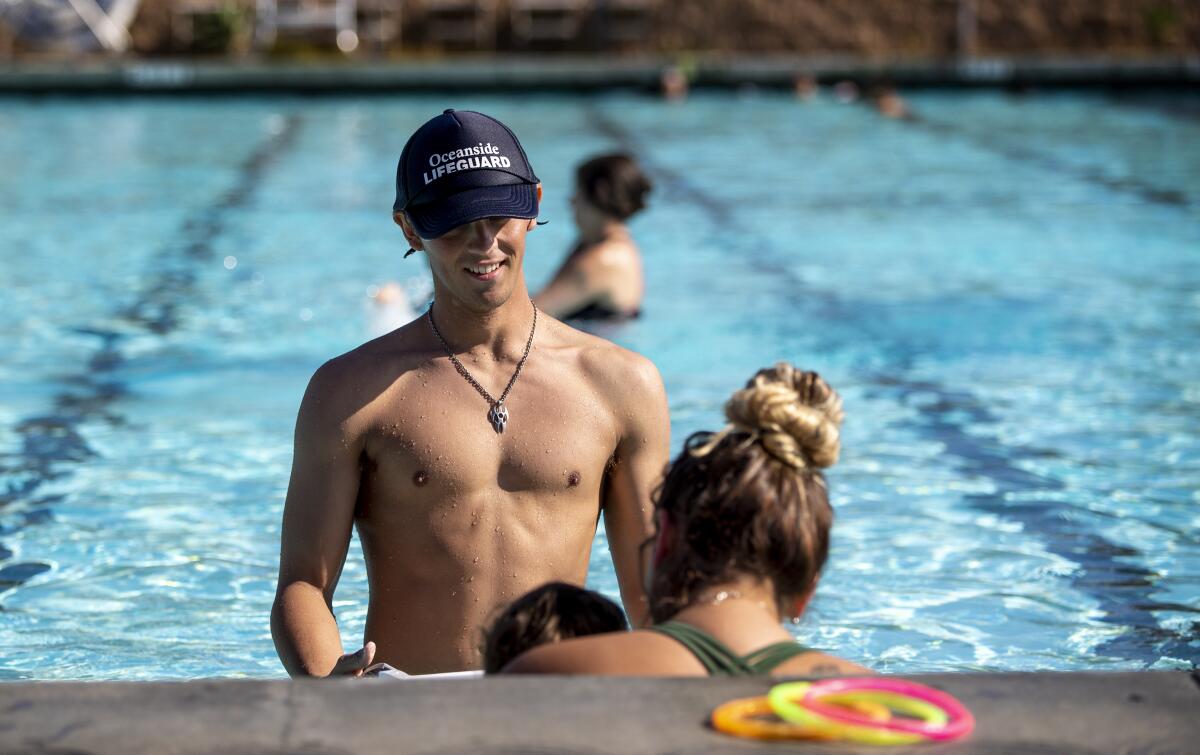
Lifeguards are in limited supply, industry experts say, partly because of the temporary shutdown of beaches and public pools during COVID-19. These shutdowns fed the so-called “great resignation,” prompting many of college age to return to school or seek work in other industries.
But California is also hobbled by certification requirements that don’t easily allow “Bay Watch” lifeguards to become “Pool Watch” lifeguards.
In California, pool lifeguards must be certified through a training program managed by the American Red Cross or YMCA of the U.S.A., whereas ocean lifeguards can officially ascend their watch towers after undergoing United States Lifesaving Assn. training.
Boerner Horvath’s bill, AB 1672, would allow ocean lifeguards, who undergo highly rigorous training and are generally better paid than their counterparts, to work at public pools during off-seasons — a period when recreation agencies are often short of lifeguards.
Three miles away from Oceanside, the city of Carlsbad has also struggled to keep its pools open. Carlsbad co-sponsored Boerner Horvath’s bill in an attempt to salvage its year-round pool season.
“It wasn’t until we were able to reopen after COVID that we saw the effects of the pandemic,” Ashlee Benson, Carlsbad’s Aquatics Manager, told The Times.
Public officials and lawmakers are still speculating about the full range of reasons why more people don’t want to become lifeguards, or return to the profession.
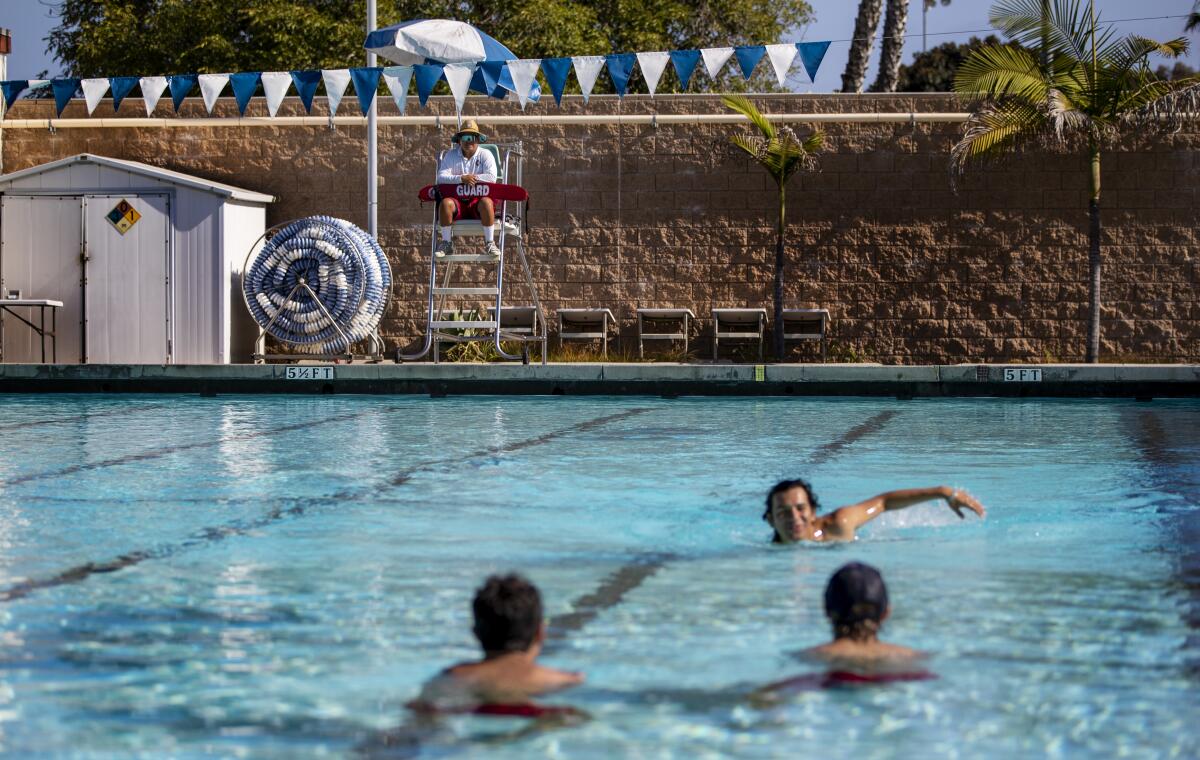
“I suspect people are making other life choices,” Boerner Horvath said. “They’re getting their degrees or going into other industries. I mean, you’re seeing this across the board.”
The last time the country experienced a lifeguard shortage was 20 years ago, when the labor market couldn’t keep up with the influx of new condominium complexes with pools, according to Bernard J. Fisher II, director of health and safety for the American Lifeguard Assn.
Now the problem is back. Fisher’s group estimates that roughly one-third of the 309,000 public pools across the country will not be able to open this summer due to staffing shortages.
Ravelle Morales, a lifeguard at the Monroe Street Pool, recalls that when she moved to Carlsbad earlier this year, the city was desperate for people to safeguard the pools and shut them down at the end of the day.
“When I came in, I stepped up and closed five or six days a week,” the 28-year-old said. Soon after, the city offered lifeguards a 9% raise to attract more applicants. That was “really helpful,” said Morales, but many of her colleagues who are COVID-conscious decided to stop lifeguarding completely.
Because of the shortage, Morales also works shifts at two YMCA locations. She plans to continue working as a lifeguard, and one day make her way up to a supervisor position.
“Our struggle has been the college-aged students,” Benson said about their hiring woes. “We’ve been struggling to fill the morning and midday chunk because they would normally be able to work those hours.”
The COVID-19 pandemic brought a reckoning to restaurants as workers quit in droves. Some hoped to change the industry for the better. Did that happen?
The labor pool problems are more than just an inconvenience, said Jodi Diamond, the CEO of a Boys and Girls Club that is less than a mile from the Brooks Street facility. “Local community pools are very much needed,” she said, noting that they help kids learn to swim and embrace lifelong water safety practices.
If pools are closed, families are going to take their dips elsewhere — to rivers or lakes where there are no lifeguards, some safety experts say.
“People are still going to swim, and drownings are going to spike like they did last year,” said Fisher of the American Lifeguard Assn.
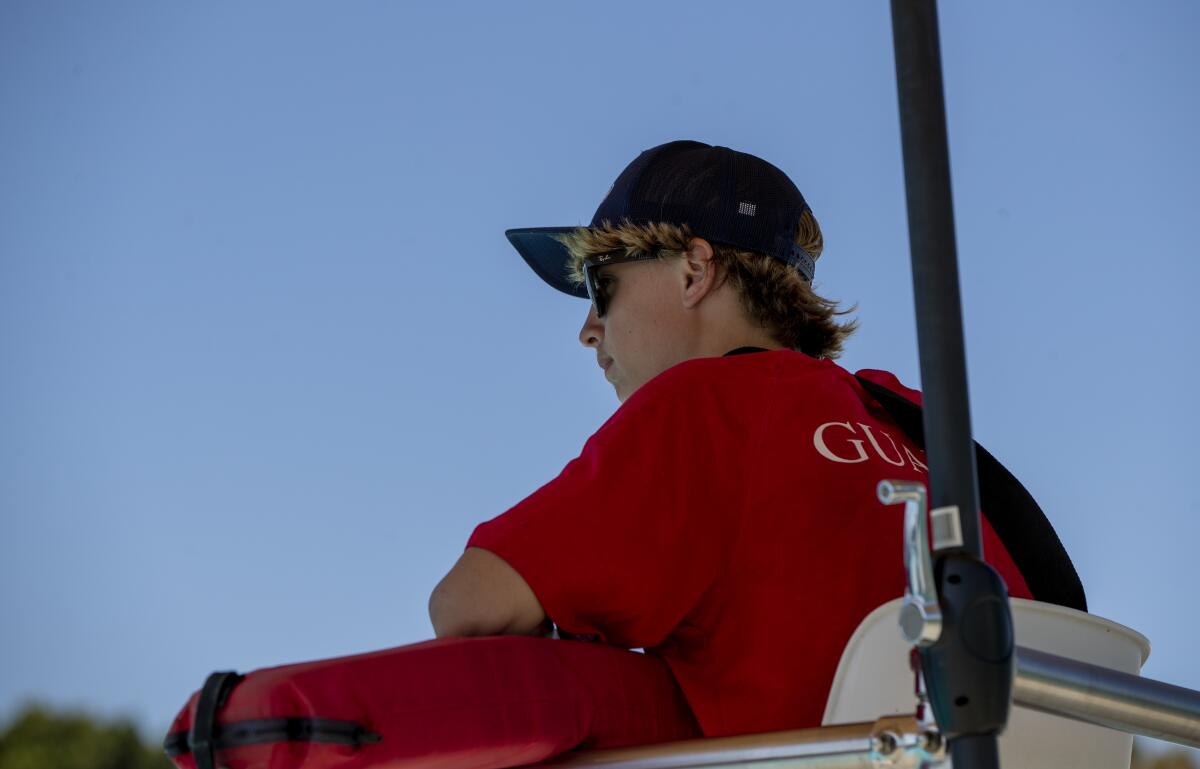
Each year, there are about 3,960 fatal drownings in the United States, or about 11 drownings per day, according to the Centers for Disease Control and Prevention. Fatal and nonfatal drownings in pools remain particularly high so far this year, according to a June report from the U.S. Consumer Product Safety Commission.
From 2019 to 2021, an estimated 80% of children who were treated for pool- or spa-related nonfatal drowning injuries were below the age of 5, although just 27% of those occurred at public locations compared to homes.
Fisher is concerned about some tourism-dependent states, such as Florida and New Jersey, that are no longer requiring lifeguards at certain pools.
This might solve the lifeguard shortage in those states, Fisher said, but he worries this could lead to an increase in fatalities. Drowning is the second leading cause of unintentional death among young children ages 1 to 4, according to the CDC.
“When you dig deeper, it’s completely an inequity issue,” Horvath said about the decisions cities face when cutting pool hours.
Even with many coastal towns scrambling to find lifeguards, Huntington Beach, a major tourist city with a nearly seven-mile coastline, has maintained a steady roster, according to Jennifer Carey, a city spokesperson.
Recreation agencies have been helped somewhat by a temporary authorization that allowed ocean guards to watch over pools, but that authorization expired on June 23.
The trouble will come in September when classes resume and agencies “will be short again on staffing,” said Connor Malone, a representative for Boerner Horvath.
Supporters are hopeful Gov. Gavin Newsom will sign the legislation, but that will not happen until after the Legislature returns from recess in August. If it does, said Benson, Carlsbad hopes it can maintain its “great relationship with ocean lifeguards.”
More to Read
Sign up for Essential California
The most important California stories and recommendations in your inbox every morning.
You may occasionally receive promotional content from the Los Angeles Times.
